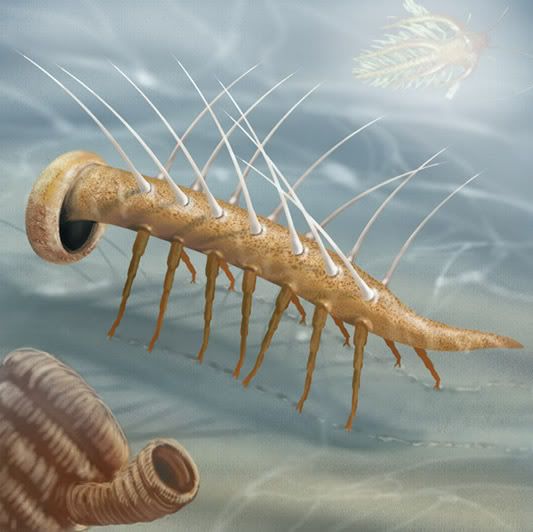
Hallucigenia is an extinct genus of animal found as fossils in the Middle Cambrian-aged Burgess Shale formation of British Columbia, Canada. It was named by Simon Conway Morris when he re-examined Charles Walcott's Burgess Shale genus Canadia in 1979. Conway Morris found that what Walcott had called one genus in fact included several quite different animals. One of them was so unusual that nothing about it made much sense. Since the species clearly was not a polychaete worm, Conway Morris had to provide a new generic name to replace Canadia. Conway Morris named the species Hallucigenia sparsa because of its "bizarre and dream-like quality" (like a hallucination).
When originally discovered and prepared, fossils of the animal Hallucigenia appeared to have preserved two rows of spines on one side of the animal and one row of tentacles on the other. Identifying its head was a problem - the fossil showed only a rounded, dark stain at one end and a narrower, dark stain at the other.
Hallucigenia
Based on the appearance of those initial fossil preparations, the first restoration made in 1977 presented us with an animal walking along the bottom of the seafloor on spiny stilts, waving seven dorsal tentacles from its back. The "tentacles" seemed to have a mouth at each tip. These were believed to be feeding aids. You can easily see why Hallucigenia got its curious name.
from
Comments